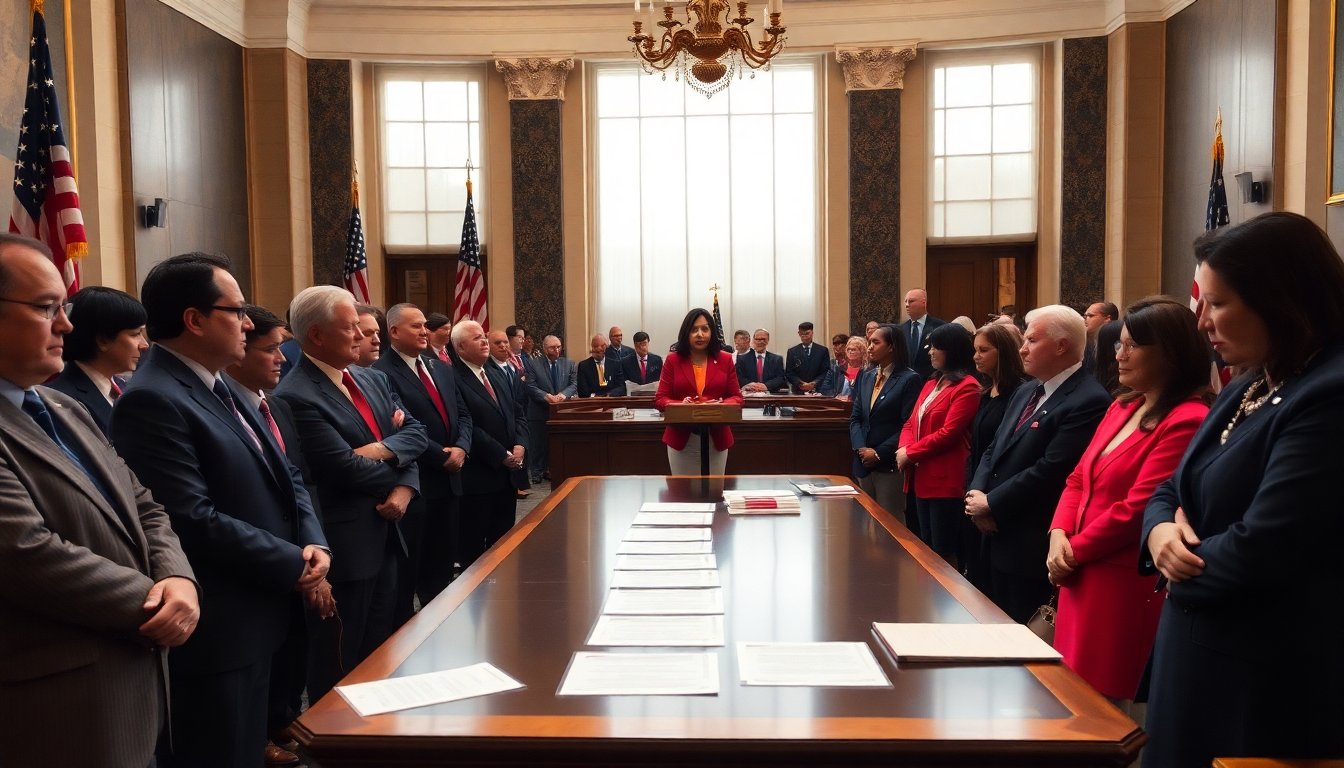Table of Contents
In a significant moment for American politics, Vice President Kamala Harris took the stage to announce the electoral victory of Donald J. Trump. This announcement unfolded during a remarkably brief session, contrasting sharply with the tumultuous events of four years earlier.
The differences between the two electoral certification processes highlight the evolving political landscape and shifting dynamics within Congress. Four years ago, the atmosphere was tense and contentious; however, this time, the proceedings unfolded smoothly and efficiently.
A stark contrast to 2021
The certification of the 2021 election results was marked by chaos and unrest. Protests and interruptions plagued that day, culminating in a siege of the Capitol building, which symbolized a fractured political climate.
In 2025, the environment was notably different. The session led by Harris was characterized by order and professionalism. Members of Congress demonstrated a commitment to uphold the democratic process, prioritizing cooperation over partisan divisions to ensure a seamless certification of the election results.
Political implications
The implications of this smooth certification are significant. It suggests a potential shift in the political landscape, indicating a pathway towards greater cooperation among lawmakers. As the nation progresses, there is hope that this efficient process can foster more constructive dialogues and bipartisan efforts.
Moreover, the calmness displayed during this certification reflects the increasing acceptance of Trump’s victory within the political sphere. While not all members may agree with the outcome, the manner in which it was presented shows a willingness to engage in the democratic process without resorting to previous obstructionist tactics.
Moving forward with unity
As the announcement concluded, attention shifted towards the future. The importance of unity and collaboration was emphasized throughout the session, with Harris calling for all parties to work together for the nation’s greater good. This call for cooperation signals a potential new chapter in American politics.
The challenges ahead are substantial, but the collective determination to address them serves as a beacon of hope. The recent certification process reminds us that democracy, despite its challenges, can prevail when leaders prioritize the interests of the country over individual agendas.
Public perception and response
The public’s response to the swift certification process has been largely positive. Many citizens expressed relief at the absence of drama that had previously characterized such events. This smooth transition may help restore faith in the electoral process, which has been eroded in recent years.
Furthermore, the manner in which Kamala Harris conducted the session has been praised as a reflection of her leadership style. Her ability to maintain decorum while navigating a potentially contentious environment showcases her commitment to democratic principles.
The differences between the two electoral certification processes highlight the evolving political landscape and shifting dynamics within Congress. Four years ago, the atmosphere was tense and contentious; however, this time, the proceedings unfolded smoothly and efficiently.0


